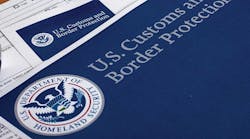Daily updates to international trade regulations dominate the headlines. Tariff wars, trade retaliation techniques and the ensuing supply chain disruptions catch our attention and have become the focal point of our “what if” conversations and strategic planning committees. In the midst of all of this political juggling is an equally compelling story of fines, penalties and settlements against companies for violations of long established import and export trade regulations that are often overlooked in daily operations.
The penalty on Chinese telecom company ZTE, which was heavily reported and mind-boggling for its $1 billion-plus amount, was an extraordinary case of company personnel knowing the law and continuing to ship without regard to it. Surprisingly, they are not alone. Less known cases are ongoing and equally as compelling for their similar corporate activities of non-compliance, as in the recent Department of Justice case against a jewelry importer for undervalued goods. Pair this with Customs and Border Protection’s (CBP) investigation of a California company for alleged antidumping duty evasion on aluminum extrusions from China. And the list of investigations and penalties is growing.
Think Twice: Enforcement is On the Increase
The ZTE case was an excellent example of how interagency cooperation is leading to a more robust approach to monitoring and enforcement. While trade regulations do change, the majority of CBP and Bureau of Industry and Security (BIS) rules and regulations do not. The fundamentals of free trade agreement use, classification, valuation, country of origin and recordkeeping requirements have been long established, and yet still remain difficult to achieve for many companies as part of their standard operating practices.
Companies seeking to reduce risk would benefit from several industry best practices. Here are my top three.
1. Manage your business partners
Importers should have clear, written instructions in place to guide the information suppliers send, and the responsibilities of the customs brokers, for example, when to declare a free trade agreement, and when not to. Likewise, exporters are recommended to provide the same level of control over their customers and freight forwarders, to avoid any misinformation from being presented at the time of export that may cause the exporter harm.
2. Establish specific attributes for product classification
Classifying product, whether for the harmonized tariff schedule (HTS) or export commerce control number (ECCN), requires sufficient information on the product or part, its attributes, function, and composition, at a minimum. Written protocols should outline who populates the material master, what the required attributes are, based on the part or product, and enforce a consistent approach by technical teams and those required to classify. Missing or incomplete information that results in classification errors will resonate further in the transaction when that code is used to qualify a product for a free trade agreement or determine if an export license is required. A noted best practice is to train all personnel involved in purchasing and product development as well as import/export teams on the requirements of HTS/ECCN determination, to improve product information.
3. Monitoring: internally and externally
Establish an ongoing internal and external audit process built on a monthly, quarterly and annual schedule. Import and export assessments should include transactional audits as well as reviews of contract, financial documents, recordkeeping and training for key personnel.
Trade Compliance Maturity Model
Companies with mature trade compliance models reflect the highest level of internal controls, built into daily operations, to promote consistent approaches to import and export transaction management. This includes a culture of compliance that allows anyone, at any level of the organization, to potentially stop a shipment from occurring if suspected non-compliance has or is about to occur.
As various government agencies align resources, data and talent to drive enforcement, companies need to match that same level of internal cooperation that holds each employee responsible for compliance with global regulations and provides a reporting structure that supports behavior. It’s time for companies to develop advanced compliance techniques that will prevent their firms’ names from becoming national or international headlines for trade compliance violations.



